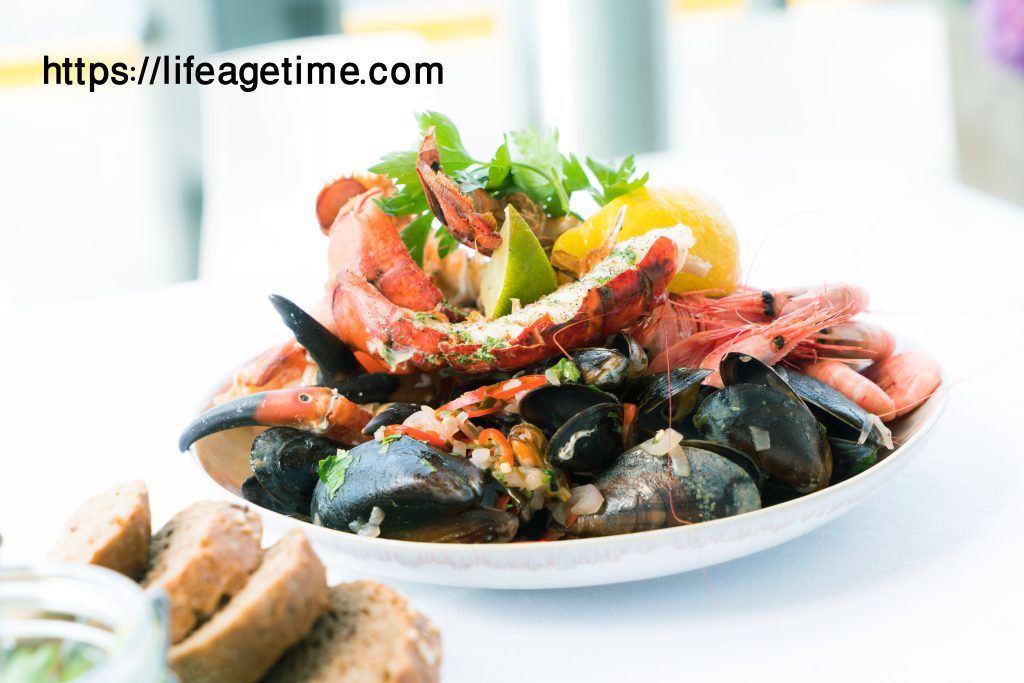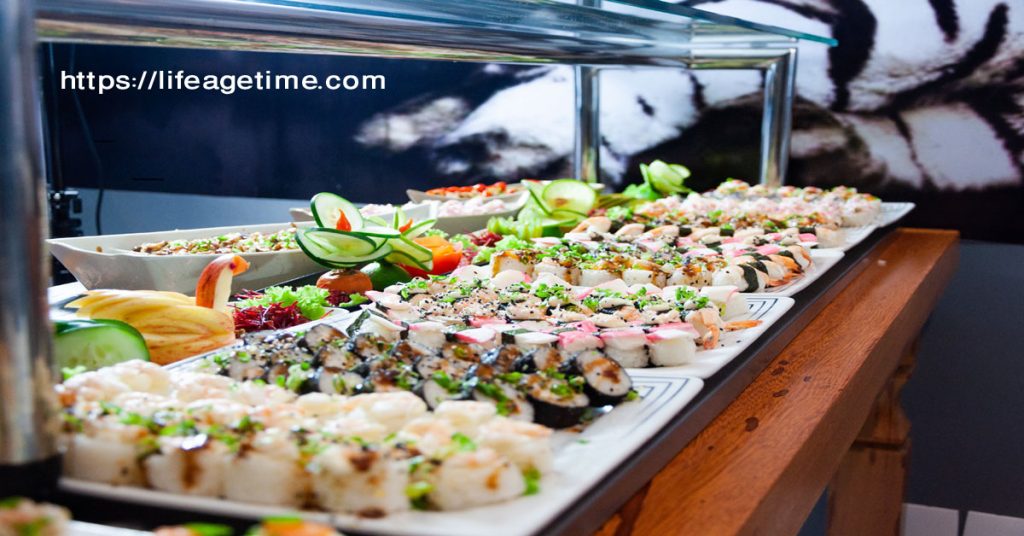Dwarf fort Food is pivotal for the survival and growth of your in-game dwarves. In this comprehensive companion, you’ll learn about the colourful aspects of food in Dwarf Fort, including how to acquire, store, and prepare it, as well as the impact it has on your dwarves’ well-being.
From stalking wild creatures and husbandry crops to brewing drinks and cooking refections, you will discover the essential strategies to keep your dwarves well-fed and happy. With the right knowledge and planning, you can ensure a steady force of food in your fort, mollifying the threat of shortage and keeping your dwarves thriving in their subsurface home.
So, let’s claw into the complications of Dwarf Fortress Food and enhance your gaming experience.
The Role Of Food In Dwarf Fortress Survival
In Dwarf Fort, food plays a pivotal part in the survival of your dwarves. Meeting their nutritive requirements is essential for maintaining their health and overall well-being. Dwarves bear a balanced diet conforming to colorful food groups to stay healthy. While food primarily serves the purpose of food, it also has a significant impact on dwarven mood and morale.
furnishing them with high-quality refections can boost their spirits and ameliorate their effectiveness in colourful tasks. On the other hand, the goods of starvation and malnutrition are mischievous to their physical and internal health. Lack of proper food can lead to weakened vulnerable systems, dropped productivity, and increased vulnerability to ails. To ensure the survival and life of your dwarf fort, prioritizing food products and operations is of utmost significance.
Farming Basics In Dwarf Fortress

Choosing the right soil for husbandry in Dwarf Fort is essential for a successful and sustainable food product system. It’s important to consider the specific requirements of different shops and crops to ensure optimal growth. The soil type will determine the vacuity of nutrients and water retention capacity, which directly affects factory health and yield.
Factory selection and crop gyration are pivotal aspects of Dwarf fort husbandry. Different shops have varying conditions, such as sun, humidity, and temperature. By diversifying the crops and rotating them regularly, you can maintain soil fertility and help the buildup of pests and conditions.
Irrigation and water operation also play a significant part in Dwarf fort husbandry. furnishing acceptable water to shops at the right time is pivotal for their growth. Depending on the soil type and rainfall conditions, you may need to incorporate irrigation systems or acclimate soddening schedules to ensure optimal humidity situations for the crops.
| Soil Type | Nutrient Availability | Water Retention |
|---|---|---|
| Clay | High | Good |
| Sandy | Low | Low |
| Loamy | Moderate | Moderate |
Overall, paying attention to soil type, plant selection, crop rotation, and water management are key factors in maximizing food production and ensuring the success of farming in Dwarf Fortress.
Hunting And Gathering Techniques
| Identifying wildlife for hunting |
| Identifying wildlife for hunting is essential when it comes to successful food procurement in Dwarf Fortress. By recognizing different species, players can selectively target animals for their meat and other resources. Some common wildlife to look out for include wild boars, deer, rabbits, and birds. Remember to prioritize hunting larger animals for a greater yield of food and materials. |
| Trapping strategies for food procurement |
| Trapping is a valuable technique for food procurement in Dwarf Fortress. Setting up various traps such as cage traps and lever traps can help capture valuable animals without risking the safety of your dwarves. Place traps strategically in areas where wildlife frequents, such as near riverbanks or in forests. Experiment with different trap designs and locations to optimize your food production. |
| Foraging for edible plants |
| In addition to hunting, foraging for edible plants is an important aspect of food collection. Keep an eye out for wild plants such as berries, mushrooms, and herbs. These can be gathered and used as ingredients in cooking or brewed into drinks. Ensure that you have knowledgeable dwarves equipped with plant identification skills to avoid consuming toxic or dangerous plants accidentally. |
Expanding your stalking and gathering ways is pivotal in Dwarf Fort to ensure a stable food force for your dwarves. By relating wildlife, enforcing trapping strategies, and rustling for comestible shops, you can enhance your food procurement sweats and increase the sustainability of your fort.
Fishing For Sustenance
Dwarf Fort is a pivotal part of ensuring your dwarves have enough food to survive. opting for the right bodies of water for fishing is essential to maximize your catch. The size and depth of a body of water will determine the types of fish that can be caught. Lakes and gutters are great options for fishing, offering a variety of fish species to sustain your colony.
When it comes to bait and attack options, dwarves can use colourful particulars similar to fishing rods and fish traps. Fishing rods are effective for catching larger fish, while fish traps can be placed in water penstocks to catch lower fish over time. Experimenting with different bait and attack options can help optimize your fishing sweats.
Fishing in Dwarf Fort isn’t stationary; it’s affected by seasonal variations. Different fish species may be more abundant during certain seasons. It’s important to keep track of these variations to acclimate your fishing strategies consequently. Pay attention to the time and temperature to make the most out of each fishing passage.
Food Preservation And Storage Methods
This is essential for maintaining a sustainable food force and precluding destruction. structure effective food storehouse structures is a pivotal aspect of this process. icing proper temperature control measures during storehouses is imperative to help corruption and maintain food quality.
One fashion for food preservation is drying, which involves removing humidity from food to inhibit bacterial growth. This can be achieved by sun drying or using dehydrators. Smoking is another system that not only imparts flavour but also acts as a preservative. By exposing food to the bank, the growth of bacteria and other microorganisms is hindered.
stirring food is an age-old fashion that utilizes salutary bacteria to save food. By creating a terrain that promotes the growth of these bacteria, the food undergoes a turmoil process, extending its shelf life and enhancing its taste.
| Food Preservation Methods | Description |
|---|---|
| Drying | Removal of moisture to inhibit bacterial growth |
| Smoking | Exposure to smoke hinders microbial growth |
| Fermenting | Utilizing beneficial bacteria for preservation and flavour enhancement |
Cooking And Food Preparation
The dwarf fort isn’t only about erecting a strong fort and defending against adversaries but also about managing the pivotal aspect of cuisine and food medication. To produce a thriving fort, you’ll need to draft a completely functional kitchen, develop fashions for different types of refections, and enhance them with spices and sauces.
To start, constructing a well-equipped kitchen is essential. Install mechanisms like grinders and manufactories to reuse raw constituents into usable forms. Next, assign stations like botcher’s shops, kitchens, and breweries where you can prepare refections and drinks. Consider the different cuisine options available for mess variety, including boiling, riding, and brewing.
trial with different constituents to produce unique flavours. use spices like swabs, pepper, and sugar to enhance the taste of your dishes. also, sauces like parsley and basil can add newness and aroma to your reflections.
With these strategies, you can transfigure food medication in Dwarf Fort into an art form, delighting your dwarves and icing their well-being.
Dealing With Food- related Challenges
Controlling vermin and pests:
When it comes to dwarf fort food, controlling vermin and pests is pivotal to ensuring the safety and integrity of your food force. enforcing effective pest control strategies, similar to regularly examining food storehouse areas, sealing any cracks and holes, and using pest-repellent accoutrements, can help prevent infestations.
Handling food corruption and impurity:
To address the issue of food corruption and impurity, it’s essential to prioritize proper food storehouse ways. This includes exercising air-tight holders, refrigeration, and indurating styles to maintain the newness of food. Regularly examining and disposing of expired or defiled particulars will also help in minimizing the threat of food-related ails.
Managing food dearths and overpluses:
In a dwarf fort, the vacuity of food can change. To effectively manage food dearths and overpluses, it’s pivotal to maintain a well-organized force system. This allows for better shadowing of food amounts, enabling you to plan and avoid situations of failure or destruction.
By enforcing these strategies, you can ensure the successful operation of food-related challenges, promoting a safe and sustainable food force in your dwarf fort.
Trade and Economy through Food
Trade and Economy through Food |
| Understanding the value of food in a dwarven economy |
Food plays a pivotal part in the trade and frugality of a dwarven society. The value of food extends beyond its introductory function as food, getting a precious asset for maximizing gains and using trade accommodations. By strategically producing and distributing food, dwarf communities can amass wealth and strengthen their profitable position.
One strategy for maximizing profit through food products involves relating the most in-demand food particulars and fastening sweat on their civilization. This can be achieved by assessing request trends and consumer preferences to ensure a steady force of sought-after goods.
In addition to maximizing gains, food can also serve as an important logrolling tool in trade accommodations. Dwarves can work their fat food reserves as a means of securing precious coffers or services in exchange. The failure of food in bordering communities can give dwarven dealers a significant advantage in accommodations, enabling them to strike favourable deals and strengthen their profitable standing.
Innovations And Advanced Techniques In Dwarf Fortress Food

This involves exercising beast for food products, exploring advanced cuisine ways and fashions, and creating unique food grounded on dwarven preferences. Beast plays a pivotal part in food products as it provides a sustainable source of meat, milk, and eggs for the dwarves.
Dwarven culinarians are constantly experimenting with new cuisine ways and fashions to produce tasteful dishes that satisfy indeed the most sapient dwarven palates. These advanced ways frequently involve complex combinations of constituents and precise cuisine times to achieve the perfect balance of flavours and textures. also, dwarven food is acclimatized to individual preferences, taking into account dwarven artistic and salutary preferences.
This attention to detail ensures that every mess is a culinary delight for the dwarves. Overall, Dwarf Fort offers a rich and immersive food system that allows players to explore colourful inventions and ways to keep their dwarven citizens well-fed and happy.
Frequently Asked Questions Of Dwarf Fortress Food
What Is The Stylish Way To Get Food In Dwarf Fort?
To get food in Dwarf Fort, you need to set up granges, gather wild shops, quest creatures, or trade with other societies. ensure you have enough devoted dwarves and storehouse space for your food force. Managing your colony’s food product is pivotal for survival.
What Do Dwarves Eat In Dwarf Fort?
Dwarves in Dwarf Fort eat colourful foods like shops, fish, creatures, and set refections. They also drink water, beer, and other alcoholic potables.
What Is The Stylish Food Beast In Dwarf Fort?
The stylish food beast in Dwarf Fort depends on your requirements and coffers. Some popular choices are gormandizers, cows, and cravens, which give meat, milk, and eggs independently. Eventually, it’s a matter of preference and what you have available in your fort.
Does Food Rot In The Cache Dwarf Fort?
Yes, food does rot in the cache in Dwarf Fort.
Conclusion dwarf fortress food
Dwarf Fort Food offers a fascinating trip into the complications of creating food in a virtual realm. From managing coffers to learning intricate cuisine ways, this game provides an immersive experience unlike any other. With its endless possibilities and gruelling gameplay, Dwarf Fortress Food is a must-try for both gaming suckers and food suckers likewise.



